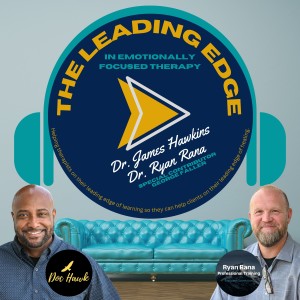
Monday Aug 15, 2022
41. The C.A.R.E Model of Assessment in EFT: Approaching Clients with Curiosity
We had the privilege of interviewing Dr. Leanne Campbell on the CARE. The C.A.R.E Model of Assessment in EFT is a great tool to help in assessment and attunement throughout the EFT process with individuals, couples, and families. Leanne so graciously shared an outline of her notes with us. You can also read The Primer for Emotionally Focused Individual Therapy. We hope you find this helpful.
CARE Model Outline
CONTEXT
- An experiential therapist seeks to enter the phenomenological world of the client. Therapist immerses self in contexts in which clients live and have lived, with attention to:
- Identity (e.g., race, ethnic, spiritual, religious, gender, sexuality)
- Environmental factors (e.g., socioeconomic, work/organizational, neighborhood)
- Experiences (e.g., racism, colorism, discrimination, sexism).
ATTACHMENT
- The therapist explores attachment and relationship history, with attention to:
- Pivotal experiences/critical moments that have shaped models of self and others.
- Coherence of narrative.
- Current relationship resources; relationship security/insecurity, intimacy/sex;
- potential intergenerational impacts, risk/vulnerability, and resiliency factors.
RELATIONSHIP/THERAPEUTIC ALLIANCE
- As a ‘temporary attachment figure,’ the therapist establishes a ‘secure base’ characterized by A.R.E. at the outset of therapy.
- The therapist monitors the therapeutic alliance throughout the process of therapy.
- Therapist attunes to potential ruptures; contextual factors, including key
- The therapist joins with the client in discovering and exploring painful material.
EMOTION
- The therapist attends to the expression of emotion, affect regulation strategies, and capacity (e.g., ‘window of tolerance), with attention to:
- Core features of ‘emotional disorders (e.g., self-criticism, numbing, detachment, nightmares, flashbacks, hypervigilance, heightened anxiety);
- Process elements, e.g., body language, facial cues; automaticity and/or rigidity of strategy; capacity (on a continuum from wide to narrow); ‘emotional handles,’ e.g., poignant words, images, phrases.
Version: 20241125
No comments yet. Be the first to say something!